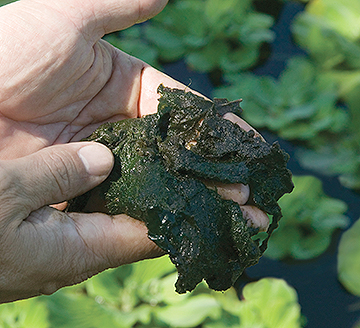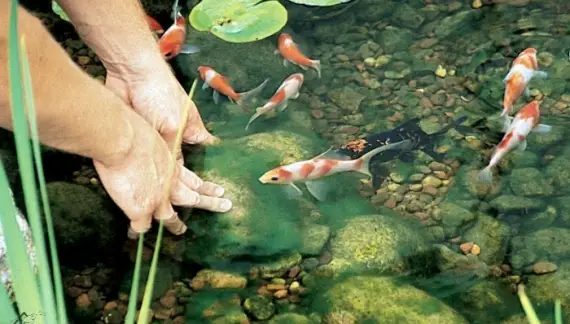Algae is a common issue that pond owners face, and it can quickly turn a beautiful pond into an unsightly mess. The good news is that there are several effective ways to reduce algae in your pond. By taking the right steps, you can maintain a healthy and clear pond environment for both your plants and fish. In this article, we will explore various techniques to help you tackle algae growth and keep your pond looking its best.
Understanding Algae
Before we delve into the methods for reducing algae, it’s important to understand what algae is and why it can become a problem in ponds. Algae are simple, non-flowering, and typically aquatic organisms that can range in size from microscopic to large seaweeds. They thrive in environments with an abundance of nutrients, sunlight, and stagnant water. When these conditions are present, algae can rapidly multiply, causing water discoloration and potentially harming the aquatic ecosystem.

Credit: www.wikihow.com
1. Proper Filtration
One of the most crucial steps in reducing algae in your pond is to ensure proper filtration. A high-quality filtration system can help remove excess nutrients and debris from the water, which are the primary factors that contribute to algae growth. Consider investing in a mechanical filter to remove physical debris and an effective biological filter to break down organic waste and prevent nutrient buildup.
2. Adequate Aeration
Aeration plays a key role in maintaining water quality and reducing algae. By adding aeration devices such as fountains, waterfalls, or aerators, you can increase oxygen levels in the water, which promotes the growth of beneficial bacteria that outcompete algae for nutrients. Furthermore, aeration helps to prevent water stagnation and stratification, creating a more balanced and healthy pond environment.
3. Regular Maintenance
Consistent maintenance is essential for keeping algae at bay. Remove any decaying organic matter such as leaves and debris from the pond, as these can contribute to nutrient accumulation and fuel algae growth. Additionally, consider adding beneficial bacteria supplements to the water to help break down organic waste and maintain a healthy ecological balance.
4. Shade and Plant Coverage
Excessive sunlight can fuel algae growth, so providing adequate shade and plant coverage can help mitigate this issue. Consider planting floating or submerged aquatic plants to provide shade and competition for nutrients, ultimately reducing the available resources for algae. In addition to their shading effect, aquatic plants also absorb excess nutrients, further limiting the conditions favorable for algae proliferation.
5. Nutrient Control
Controlling nutrient levels in the pond is vital for preventing algae blooms. Limit the amount of fertilizer used in the surrounding landscape to minimize nutrient runoff into the pond. Additionally, avoid overfeeding fish, as uneaten food can decompose and contribute to nutrient buildup. By managing nutrient inputs, you can effectively curtail the excessive growth of algae in your pond.

Credit: www.tetra-fish.com
6. Algae-Eating Fish
Introducing algae-eating fish species, such as koi, grass carp, or plecos, can serve as a natural and enjoyable method of algae control. These fish can help keep algae in check by consuming it as part of their diet. However, it’s important to research and select fish species that are compatible with your pond’s ecosystem and won’t disrupt the balance of the aquatic environment.
7. Chemical Treatments
When all other methods have been exhausted or in severe cases of algae overgrowth, chemical treatments can be considered as a last resort. Algaecides are chemical compounds specifically designed to target and eliminate algae. However, it’s crucial to use these treatments judiciously and according to the manufacturer’s instructions, as overuse can harm aquatic life and disrupt the pond’s ecological equilibrium.
Conclusion
Reducing algae in your pond requires a multi-faceted approach that addresses the underlying causes of algae growth. By implementing proper filtration, aeration, regular maintenance, nutrient control, plant coverage, and considering natural algae control methods, you can effectively manage and reduce algae in your pond. It’s essential to strike a balance between these strategies and avoid relying solely on one method. With consistent effort and the right techniques, you can enjoy a clear, healthy, and vibrant pond environment for years to come.
Remember that maintaining a healthy pond ecosystem is an ongoing process, and periodic adjustments may be necessary to adapt to changing environmental conditions. By staying proactive and informed, you can create a balanced and harmonious aquatic environment that is free from the unsightly effects of excessive algae growth.





